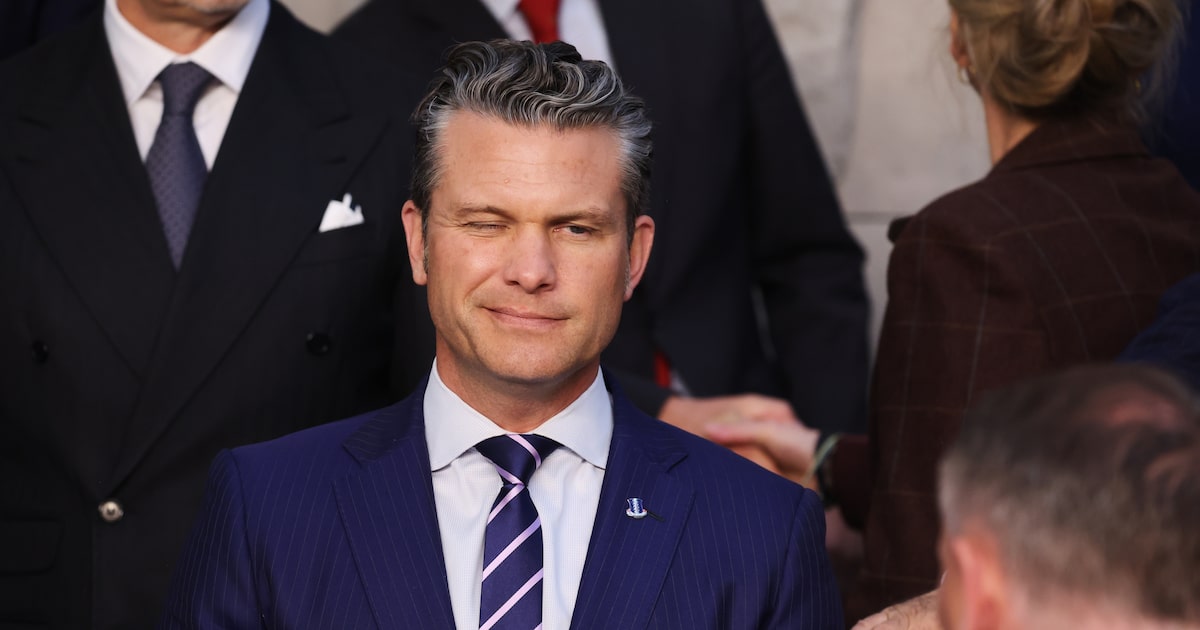
The deadline has now passed on Secretary of War Pete Hegseth’s demand that journalists covering the Pentagon sign an agreement to restrict their reporting of defense and national security issues to information cleared by his office.
The Pentagon Press Association, whose members regularly cover the U.S. military from inside the building, notes that the new rule replaces a much simpler, one-page form that outlined access limitations for journalists.
This is not about classified information. That remains off limits. Now journalists reporting stories on America’s military, using even unclassified but uncleared information, can be labeled “a security or safety risk.”
The new policy also comes with a threat to evict the Pentagon reporters who did not sign the pledge. On Oct. 14, in a rare show of unity, every major media outlet — print, cable, radio and broadcast, even conservative leaning Fox News and Newsmax — refused to comply with order. The next day, nearly every journalist with Pentagon media credentials jointly turned in their identification badges and walked out.
The Pentagon Press Association called the change in policy an “unprecedented message of intimidation.”
The New York Times wrote, in part, “it constrains how journalists can report on the U.S. military, which is funded by nearly $1 trillion in taxpayer dollars annually. The public has a right to know how the government and military are operating.”
Fox News, where Hegseth worked before as an on air host, said the policy is unprecedented and “threatens core journalistic protections.” Others also filed similar objections.
Only one large U.S. news group agreed to the new restrictions: the pro-Trump cable TV channel One America Network.
This is not the first time the secretary has evicted media outlets. In late January, he swapped several news organizations with others considered more sympathetic to administration goals.
Until recently, credentialed journalists could roam much of the non-restricted spaces of the Pentagon. Since May, they have required an official escort to walk most of the building’s hallways.
And soon all news organizations in the building will be relocated to a still unannounced place inside the Pentagon, further limiting reporters’ access to military personnel.
NPR’s Tom Bowman said the new policy “would make us stenographers parroting press releases, not watchdogs holding government officials accountable.”
Considering the administration has deployed troops to patrol American cities, destroyed alleged Venezuelan drug boats in the Caribbean Sea, and now ponders sending Tomahawk missiles to Ukraine, you would think Secretary Hegseth would want to update reporters on significant changes in national security policy. But he has not briefed Pentagon reporters in four months.
President Donald Trump likes the changes in Pentagon media access. He told reporters, “It bothers me to have even high-ranking generals walking around with you guys on their sleeve … they can make a mistake, and a mistake could be tragic.”
The trouble with that is the only “mistakes” in handling sensitive information lately have been by the administration.
In March, Pete Hegseth mistakenly included the editor in chief of The Atlantic magazine in a sensitive discussion with top Trump intelligence officials on the app Signal in which Hegseth talked about a military strike on Yemen more than an hour before the strikes hit.
Mick Mulroy, a top defense official in the first Trump term, called that a significant breach of security.
Then earlier this month, the Minnesota Star Tribune published messages Anthony Salisbury, one of presidential adviser Stephen Miller’s top lieutenants, sent on Signal about plans to deploy elite Army units to “war-ravaged” Portland.
Had either man been in uniform, such an error might well have been a career ender. Retired Gen. Jack Keane, once vice chief of staff of the Army, has called the new rules an attempt to “spoon-feed information to the journalists.”
It will not work. In fact, it might keep the Pentagon from making necessary changes to improve how it protects the country and keeps service members safe. On Fox News Keane explained: “Were there times when stories were done that made me flinch a little bit? Yeah. But that’s usually because we had done something that wasn’t as good as we should have done it.”
Certainly, journalists are not perfect. During World War II, Robert McCormick, a staunch Franklin Roosevelt foe, owned the Chicago Tribune. He had vehemently opposed any U.S. involvement in the war. Six months before Pearl Harbor he published a confidential government plan to prepare for possible entry into the war. During the Battle of Midway in 1942, he revealed America had broken Japanese naval codes. Those actions may have threatened the security of military personnel.
But the 1971 publication of the Pentagon Papers did an invaluable public service by uncovering how administrations as far back as Harry Truman’s had misled the public about U.S. activities in Vietnam.
As the embedded correspondent Ernie Pyle so ably demonstrated during World War II, a journalist can provide a voice for the countless men and women on the front line who carry out policy and face danger but have no input on that policy. Pyle’s foxhole reporting built trust with frontline GIs and their families back home. That trust helped maintain public morale during the war’s most difficult moments.
We need that trust now more than ever to cope with what seems an increasingly unmoored world. Journalists, with full access and a full understanding of the needs of those pledged to defend us, help us to navigate it.
When Pyle died in combat, President Harry Truman wrote, “No man in this war has so well told the story of the American fighting man as American fighting men wanted it told.”
Now, as then, journalists should not be the enemy. Now, as then, we need them on the job — inside the Pentagon doing their job.
